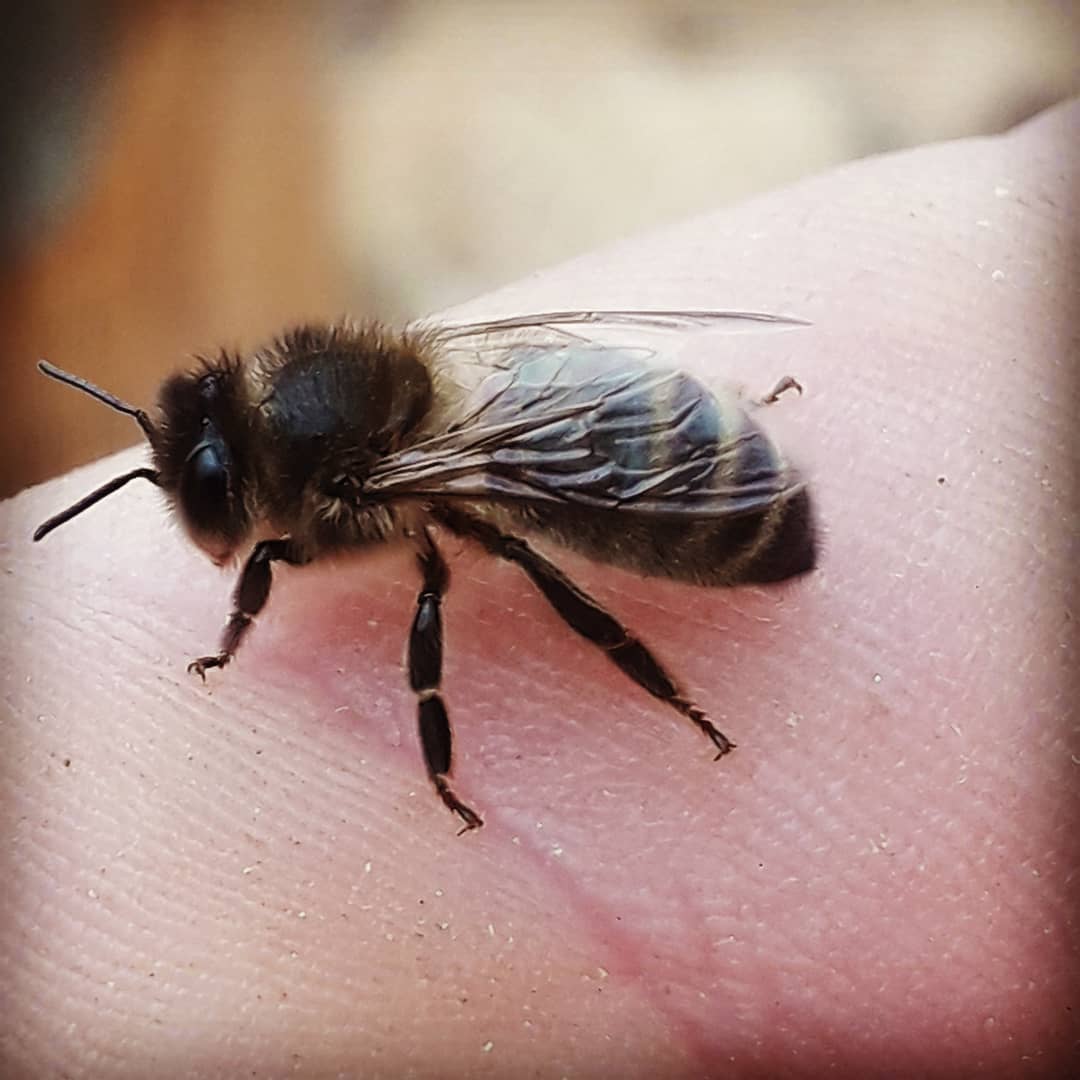
Bee conservationist Mick Verspuij is seeking the public’s help in locating bee colonies throughout Inishowen to assist in his PhD research
A bee enthusiast is appealing to the people of Inishowen to help uncover the hidden lives of the peninsula’s native honeybee by reporting any sightings of wild or managed bee colonies in the area.
Buncrana-based Mick Verspuij, who is currently undertaking a PhD at the University of Galway, is calling on the local community to fill out a short questionnaire that will support his groundbreaking research into the natural habitats of free-living honeybee colonies.
His focus is the interaction between managed honeybee colonies - those kept by beekeepers in hives - and wild or free-living colonies that reside in tree cavities, or in chimneys, walls or roof spaces.
“I’m particularly interested in the natural habitat of the honeybee, which is tree cavities,” the bee enthusiast explains. “We know very little about how bees interact with these spaces on a landscape level, and I want to better understand the relationship between the tree and the colony occupying it.”
His research is part of Free-B, a collaborative project involving five European countries that aims to deliver nature-based solutions for protecting native honeybees and their habitats.
Read more: Honeybee trail in Glencolmcille
A central part of Mick’s study is to establish a clearer picture of where bees - both managed and wild - are located in Inishowen.
“I know of a few wild colonies, but I’m hoping the people of Inishowen can help provide more detailed information. That’s why I created this census - to ask people to report any bee colonies they’ve seen, whether it’s a hive in someone’s garden or bees nesting in a wall or a tree,” he said.
While Ireland has a rich tradition of beekeeping, Mick’s work sheds light on the lesser-known native honeybee strains, including the genetically distinct bees native to the Inishowen peninsula.
So far, eight distinct strains of native bees have been identified in Ireland and two of those are in Inishowen, but more research needs to be done.
“From monitoring done in recent years, we’ve found that Inishowen is home to two distinct, locally adapted native Irish honeybee lines,” he revealed. “These are unique to this region and not found elsewhere in the country. However, these lines are now under threat due to the importation of non-native bees, which can lead to hybridisation.”
Native bees (apis mellifera mellifera) have evolved to adapt to Ireland’s climate and have several unique features and characteristics. The colouration of the bee is very dark, almost black. It is very robust with calm temperament which is able to forage in a range of weather conditions including light rain.

Non-native bees have a visible banding on their abdomen, sometimes yellow to orange in colour. These imported bees are not acclimatised to our damp climate and don’t fly in wet weather.
Mick, who is Dutch, has witnessed this shift first-hand since moving to Donegal back to 2009. “When I first got involved with bees, there weren’t many beekeepers in the area,” he said. “But interest has grown, and unfortunately, some imported colonies don’t thrive in our local climate. They can become ill and die out, but not before mating with the local strains, weakening them genetically.”
The census will also help answer questions about whether wild and managed colonies are competing for resources like forage, which could affect not only honeybees but other pollinators as well.
“At the moment we don’t have the data,” he said. “But once we do, we can begin to understand how dense the populations are and whether there’s any ecological pressure on specific areas.”
This time of year, Mick explains, is particularly important for bee activity with a new queen moving in and the old queen moving out from existing nests.
“Spring and early summer are when colonies start swarming. That’s their way of multiplying - half the colony leaves to find a new home. Natural tree cavities are scarce, so people often find swarms looking for shelter in chimneys or wall cavities.”
With flowers now blooming, bees are also gathering nectar to sustain them through the lean months of winter.
Bees are critical to food production and the health of the environment in which we humans live.
“Over 70% of all fruits and vegetables are pollinated by bees,” Mick emphasises. “Their work doesn’t just help our crops - it supports entire ecosystems. Birds, for example, rely on berries that grow after pollination, which in turn supports reforestation through natural seed dispersal.”
Anyone in Inishowen who knows of a bee colony - whether managed or wild - is encouraged to complete the short questionnaire on the link below and contribute to what could be a vital step in protecting Ireland’s native bees.
Subscribe or register today to discover more from DonegalLive.ie
Buy the e-paper of the Donegal Democrat, Donegal People's Press, Donegal Post and Inish Times here for instant access to Donegal's premier news titles.
Keep up with the latest news from Donegal with our daily newsletter featuring the most important stories of the day delivered to your inbox every evening at 5pm.